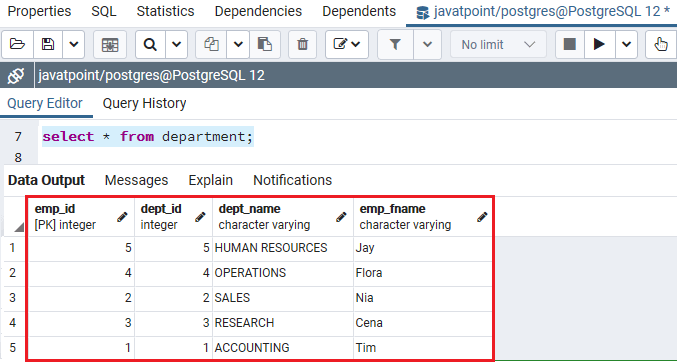

( 3) Code language: SQL (Structured Query Language) ( sql ) DROP TABLE IF EXISTS T1 ĬREATE TABLE T1 (label CHAR( 1) PRIMARY KEY) The following CREATE TABLE statements create T1 and T2 tables and insert some sample data for the cross-demonstration. PostgreSQL supports inner join,left join, right join, full outer join, cross join, natural join, and a special kind of join called self-join. SELECT FROM t1 LEFT JOIN t2 ON t1.id t2.id UNION SELECT FROM t1 RIGHT JOIN t2 ON t1.id t2.id. But instead, we will emulate them using a combination of LEFT and RIGHT JOINS and the UNION query.

INNER JOIN T2 ON true Code language: SQL (Structured Query Language) ( sql ) PostgreSQL CROSS JOIN example We do not have a full join or full outer join in MySQL. The following statement is equivalent to the above statement: SELECT select_listįROM T1, T2 Code language: SQL (Structured Query Language) ( sql )Īlso, you can use an INNER JOIN clause with a condition that always evaluates to true to simulate the cross-join: SELECT * The following illustrates the syntax of the CROSS JOIN syntax: SELECT select_listĬROSS JOIN T2 Code language: SQL (Structured Query Language) ( sql ) For example, the T1 has 1,000 rows and T2 has 1,000 rows, the result set will have 1,000 x 1,000 = 1,000,000 rows. Suppose that you want to perform a full outer join of two tables: A and B. If T1 has n rows and T2 has m rows, the result set will have nxm rows. Introduction to the PostgreSQL FULL OUTER JOIN.

Suppose you have to perform a CROSS JOIN of two tables T1 and T2. Introduction to the PostgreSQL CROSS JOIN clauseĪ CROSS JOIN clause allows you to produce a Cartesian Product of rows in two or more tables.ĭifferent from other join clauses such as LEFT JOIN or INNER JOIN, the CROSS JOIN clause does not have a join predicate.
Full join in postgresql how to#
Summary: in this tutorial, you will learn how to use the PostgreSQL CROSS JOIN to produce a cartesian product of rows from the joined tables.


 0 kommentar(er)
0 kommentar(er)
